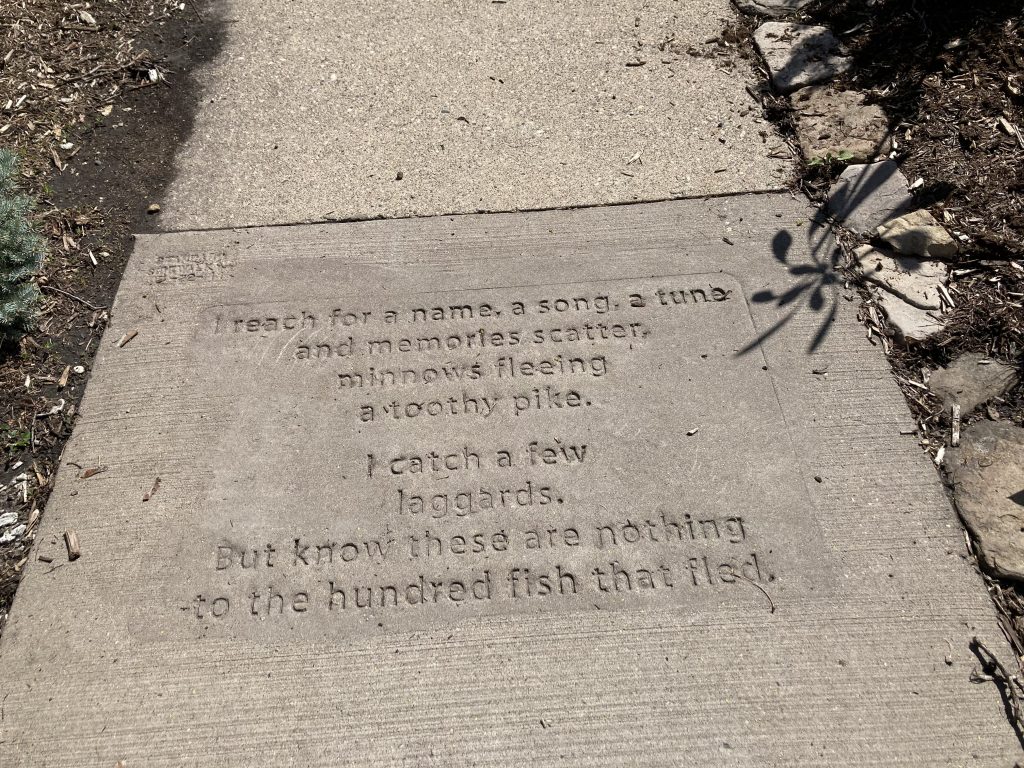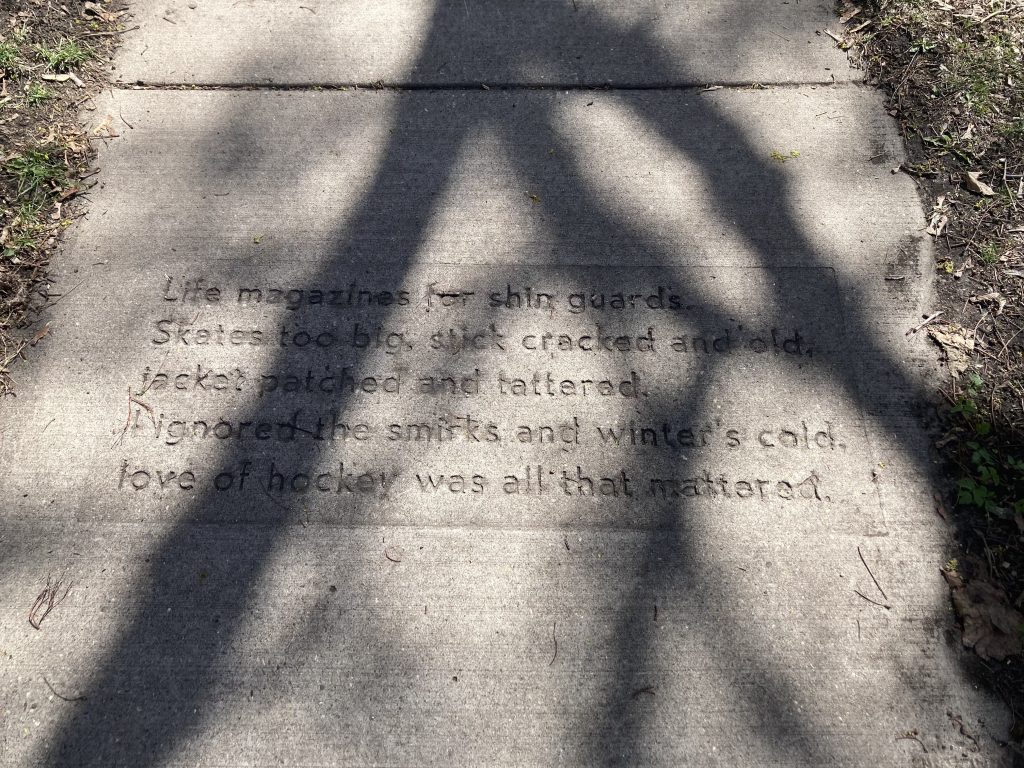5.15 miles
bottom of franklin hill
54 degrees
wind: 3 mph
The sun is back! And so are shorts without tights. And rowers and roller skiers and laughing woodpeckers! A beautiful morning for a run. I remember looking down at the river: smooth and still. Heard a creaking noise under the trestle, almost like an old swing. Did someone hang up a swing down there? Smelled urine just above the flats — yuck! Encountered other runners and walkers and dogs and e-bikes — one was powering up the Franklin hill playing a classic rock song . . . I think it was AC/DC.
Running back through the tunnel of trees, almost done, I saw a dark shape up ahead. I assumed it was a dog. Nope, it was that big turkey again and this time he gobbled at me. The trail was narrow with no choice but to run right past him unless I turned around. Since I’m a wimp and he was staring menacingly at me, I turned around and ran until I reached the end of the fence. Then I climbed up to the bike trail. I’m fine with being a wimp.
Listened to the rowers as I ran north. After turning around and running up most of the hill, I put in Beyoncé’s new album, Cowboy Carter. Earlier today I was posting things about bees on a new resource page, Bees, so I have bees on the brain. Listening to Beyoncé, I heard a line with the word honey in it and thought, Queen Bee! Yes, more bees. I’ll have to add Beyonc´e to my bee page!
Before the run, I read this poem by James Schuyler that I’ve wanted to post ever since I discovered it a few weeks ago. I wanted to wait until it was green. Today it is, so I’m posting it:
A Gray Thought/ James Schuyler (1972)
In the sky a gray thought
ponders on three kinds of green:
Brassy tarnished leaves of lilacs
holding on half-heartedly and long
after most turned and fell to make
a scatter rug, warmly, brightly brown.
Odd, that the tattered heart-shapes
on a Persian shrub should stay
as long as the northern needles
of the larch. Near, behind the lilac,
on a trunk, pale Paris green, green
as moonlight, growing on another time scale
a slowness becoming vast as though
all the universe were an atom
of a filterable virus in a head
that turns an eye to smile
or frown or stare into other
eyes: and not of gods, but creatures
whose size begins beyond the sense of size:
lichens, softly-coloured, hard in durance,
a permanence like rock on a transient tree.
And another green, a dark thick green
to face the winter, laid in layers on
the spruce and balsam or in foxtail
bursts on pine in springy shapes
that weave and pierce
the leafless and unpatterned woods.
I know this is a poem about 3 different greens in the fall, nearing winter. I’m posting it because I love his descriptions of green and wanted to use it to think more about different greens today. That was my plan, at least, as I ran. All I managed to do was chant a few 3-beat greens:
emerald green
army green
jungle green
pear green —
lime green —
Mid-chant I noticed the dandelions on the edge of the trail and condensed the 4-syllable word, dan de li on into 3-syllables: dan dy lines
Dandy lines? Love it. Maybe the title of a poem — a cento with flower lines, or is that too much?
The green I remember most was possibly not even green, depending on who you ask. A biker biked by, wearing the brightest yellow-green (or maybe just yellow?) shirt I’ve been able to see in a long time. Usually yellow or yellow-green is muted for me. Not this shirt. Wow! So bright it almost made my eyes hurt. My vision is so strange. How was I able to see the bright color this time, when I usually can’t see it?
added a few hours later: I almost forgot to mention the little wren that I saw as I was walking back to my house. First, a flash — or flutter or flurry or small explosion* — of movement on the street. Something, I could not tell what, ascending. Then a scan, all around until the source was found: a tiny brown bird on the top of the fence. They stayed long enough for even me to see their little face. Such a tiny bird! What miracle today allowed me to see them?
After lunch, while doing the dishes, I listened to the New Yorker Poetry podcast and heard David Baker read his wonderful poem, Six Notes (notes refers to taking notes for a poem, six sections, and the notes of different birds). The beginning of his poem reminds me of my bird sighting, even though my little wren didn’t make a sound and was rising, not falling:
from Six Notes / David Baker
Come down to us. Come down with your song,
little wren. The world is in pieces.
We must not say so. In the dark hours,
in the nearest branches, I hear you thrum—
—
Come up to us. Come up with your song,
little wren. The world is in pieces.
We must not say so. In the dark hours,
on the nearest fence post, I see you thrum–
*Having suddenly added explosion of movement as one of my word options, I feel compelled to add the source of that inspiration. It’s from a Chen Chen interview I read yesterday and had been planning to post sometime soon. Here’s what he said:
Poems are the opposite of habits. They are explosions. Sometimes they are small explosions. But loud. Or huge, quiet explosions.
Chen Chen Interview
So, was this little wren’s small explosion up and off the street a poem? Yes!

